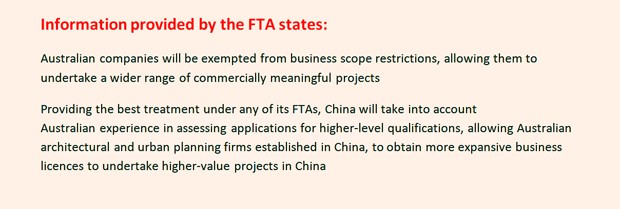A week ago we reported that the China Australia Free Trade Agreement (FTA) will allow Australian architectural and urban planning firms to offer full design services in China – a move that has so far been applauded by the industry.
The Association of Consulting Architects Australia (ACA), which addresses the ‘business of architecture’ in Australia, is one organisation which has responded positively to the news.
“The ACA is in support of all measures that support and encourage good opportunities for Australian businesses. A trade agreement with China that offers fair and equitable access to both markets could be of benefit to our industry,” Steve Kennedy, National President of the ACA, tells Architecture & Design.
“Australian architectural practices already enjoy good access and reach within the Asia Pacific Region, including China. Australian architectural practices have a strong reputation in China and the Asia Pacific Region due to both the quality of their work and the benefits of having had many Asian architectural students go through our university programs and architectural practices.”

But while he acknowledges that the FTA will enhance interest in China for Australian expertise, Kennedy says it remains to be seen whether the deal “will have a beneficial, or any, impact on Australian architectural practices’ access to the Chinese market”.
This echoes previously raised concerns about the imbalance of access. Speaking to the Australian Financial Review last week Paul Berkemeier, Australia’s delegate to ARCAsian, had said that opening the market would not necessarily bring immediate change as certain barriers remain, such as practice differences between Australian and Chinese firms.
BVN principal James Grose had also commented about the agreement seeming to favour Chinese architects working in Australia rather than Australian architects designing in China, adding that this would increase the competition in Australia for project bids.
Kennedy agrees, saying there is a real danger that the FTA will result in heightened competition in the Australian market – a market that is already subject to significant pressure.
“Where this competition will occur is hard to assess, though, even if it is restricted to larger practices this will still have a flow through effect on smaller practices,” he says.
A key factor contributing to the level of competition is the impact Australian standards and regulations have on projects in Australia. According to Kennedy, local practices familiar with the codes should be able to remain relevant.
“The Australian construction sector is highly regulated and it requires considerable expertise and knowledge to understand, navigate and apply those regulations, which is not only why Australian architecture is highly regarded worldwide but also one of the reasons why Australian skills and firms are so sought after elsewhere,” he explains.
“As such, it will be more likely that Joint Ventures and partnerships between Australian and Chinese firms will deliver the most meaningful long term business opportunities.
“This is a trend already occurring and if managed well could be of benefit to the industry in offering broader opportunities and experience for Australian architectural businesses and architects.”
The ACA is a peak body representing the interests of architectural employers in industrial matters. Its mission is to ensure the business of architecture is best positioned to make profits without undue risk.

